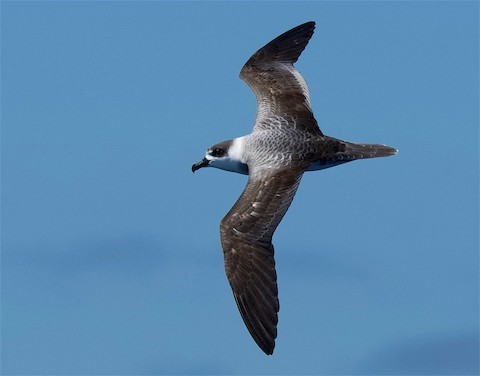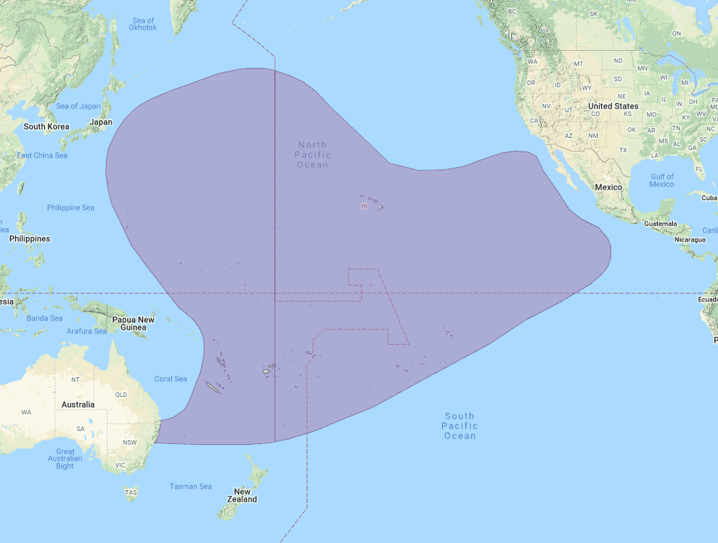Birdfinding.info ⇒ Locally common in the breeding season, November to June, around its remote mid-oceanic nesting grounds, and can be seen in small numbers more accessibly around Norfolk Island. During this period, it has been found uncommonly on pelagic trips in the North Cape waters of New Zealand, and offshore from Southport, Queensland, and more rarely southward. Uncommon in Hawaiian waters, mostly April-May and October to December, when it is sometimes seen on pelagic trips out of Kailua-Kona. In Japanese waters, it is seen uncommonly around the Izu and Ogasawara Islands, mostly from May to November.
White-necked Petrel
Pterodroma cervicalis
Breeds in the Kermadec and Norfolk Islands and disperses widely across tropical and subtropical waters of the Pacific Ocean.
Breeding. Breeds from November to June, nesting colonially in burrows on grassy hillsides.
The vast majority of the world’s population (~50,000 pairs) nests on Macauley Island in the Kermadecs, in several colonies: “in Sandy Bay, on the slopes above Quadrat Gully, on the gully slopes and floor of Access Gully, on the plateau near Grand Canyon, in Jim’s Gully, and on the upper slopes of Mt. Hazard” (BirdLife International 2018).
There is a second, much smaller colony on Phillip Island near Norfolk Island. There is some evidence that it much also be recolonizing Raoul Island (in the Kermadecs)—where it bred historically until the early 1900s.
Nonbreeding. From April to November, much of the population winters in the western and central North Pacific, from Japanese offshore waters east to Hawaii and south into Micronesia and northern Polynesia. It has been recorded north into the Sea of Okhotsk (northern Sakhalin).
Much smaller numbers winter in the eastern North Pacific to Mexican offshore waters, where they are greatly outnumbered by the confusingly similar Juan Fernández Petrel.
Some portion of the population—presumably mostly first-year birds—remains in the nonbreeding range year-round.
There is an exceptional record of a vagrant photographed in inshore waters of the Gulf of Siam (November 22, 2019).

White-necked Petrel. (Bang Tabun Bay, Phetchaburi, Thailand; November 22, 2019.) © Panom Yingpaiboonsukh
Identification
A large, proportionately long-tailed and long-winged gadfly petrel with gray upperparts, nearly all-white underparts, a black helmet, and bold white nape-collar.
The head is strongly patterned, with black around the eyes, cheeks, and crown, and a white forehead, throat, and collar.

White-necked Petrel. (Offshore from Southport, Queensland, Australia; March 24, 2018.) © Andrew Naumann

White-necked Petrel. (South Pacific Ocean about 1,000 miles east-northeast of North Island, New Zealand; March 17, 2019.) © Hiroyuki & Shoko Tanoi
The upperparts are mostly dark-gray with paler-gray scaling on the back and shoulders. The uppersides of the wings and lower back are mostly blackish. The rump and tail are usually dark or medium gray (darker than the upper back, slightly paler than the lower back), rarely with a few whitish markings on the uppertail coverts.

White-necked Petrel. (Offshore from North Cape, North Island, New Zealand; March 2011.) © Detlef Davies
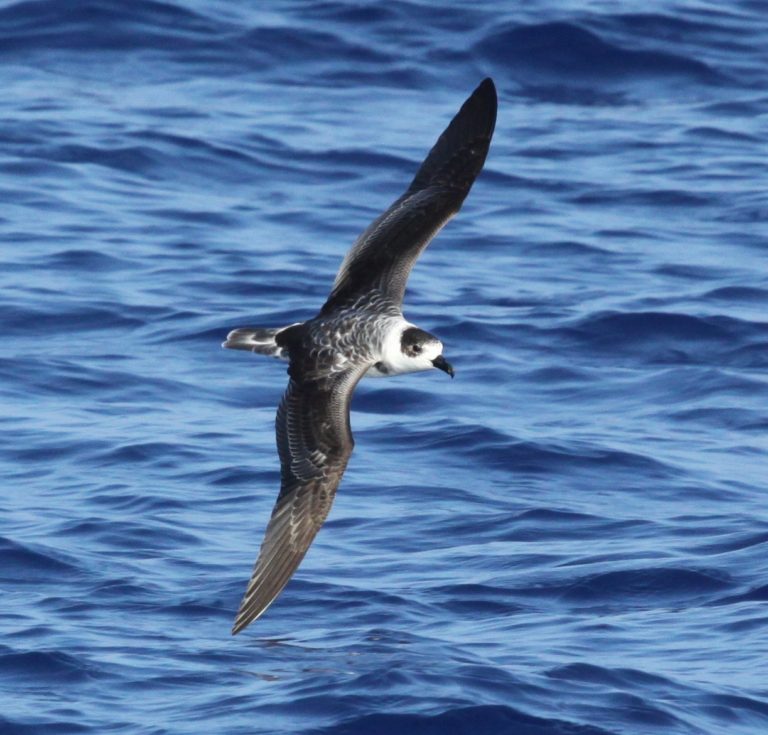
White-necked Petrel. (Offshore from Kailua-Kona, Big Island, Hawaii; December 16, 2009.) © Daniel L. Webster / Cascadia Research Collective

White-necked Petrel. (Offshore from Crowdy Head, New South Wales, Australia; January 24, 2019.) © Liam Murphy
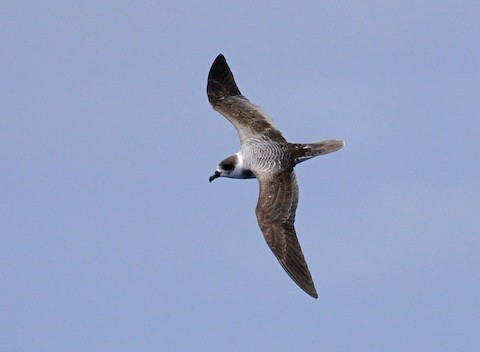
White-necked Petrel. (Offshore from Southport, Queensland, Australia; February 3, 2010.) © Tom Tarrant
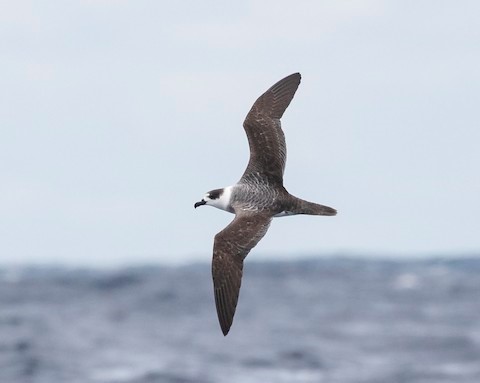
White-necked Petrel. (Offshore from South West Rocks, New South Wales, Australia; April 3, 2021.) © Marie Lister
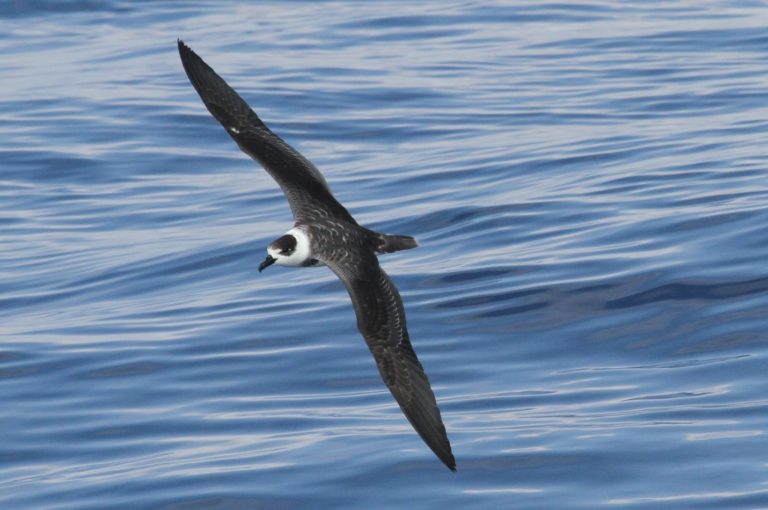
White-necked Petrel. (Offshore from Kailua-Kona, Big Island, Hawaii; November 3, 2011.) © Daniel L. Webster / Cascadia Research Collective
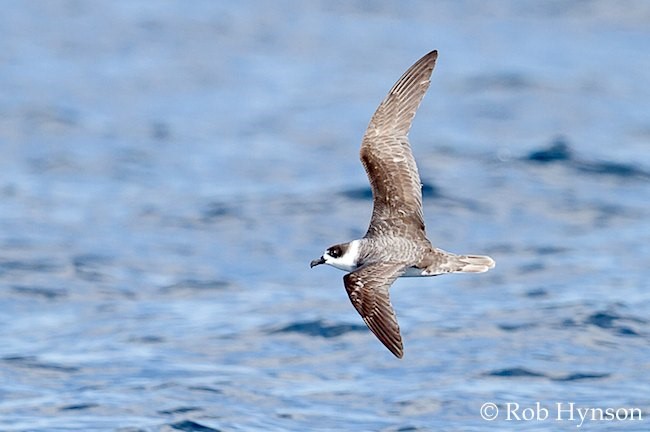
White-necked Petrel in heavily worn plumage. (Offshore from Wollongong, New South Wales, Australia; March 23, 2013.) © Rob Hynson

White-necked Petrel in heavily worn plumage. (Ogasawara Islands, Japan; July 5, 2018.) © Yann Muzika
The underparts are almost entirely white, with narrow black borders on the tail, wingtips, and leading and trailing edges of the wings, and a partial black carpal bar extending inward from the wrist. Typically shows a pronounced dark-gray partial collar on the sides of the chest.
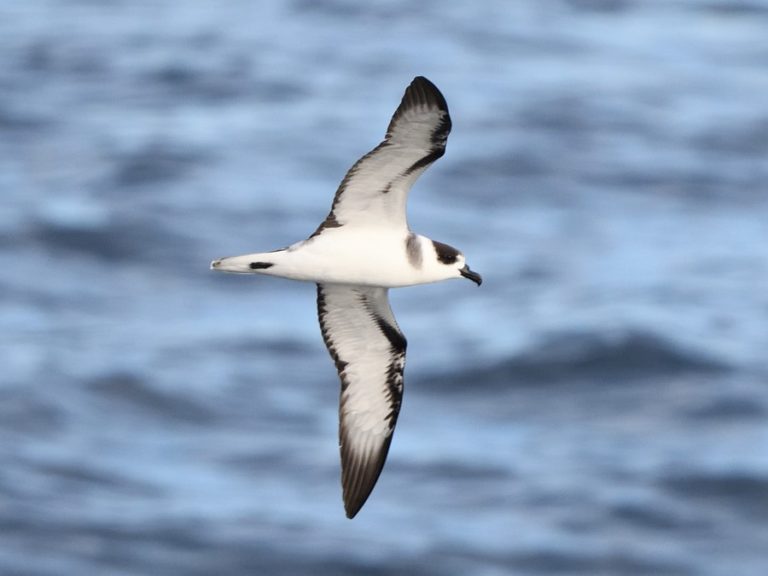
White-necked Petrel. (South Pacific Ocean about 1,000 miles east-northeast of North Island, New Zealand; March 17, 2019.) © Hiroyuki & Shoko Tanoi
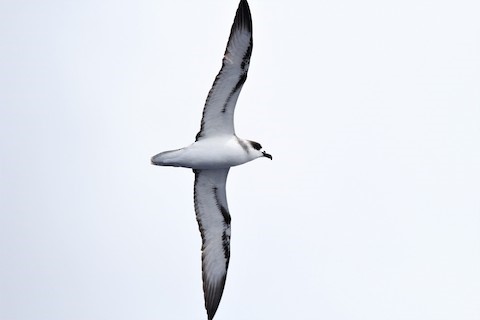
White-necked Petrel. (Offshore from Southport, Queensland, Australia; March 24, 2018.) © Andrew Naumann
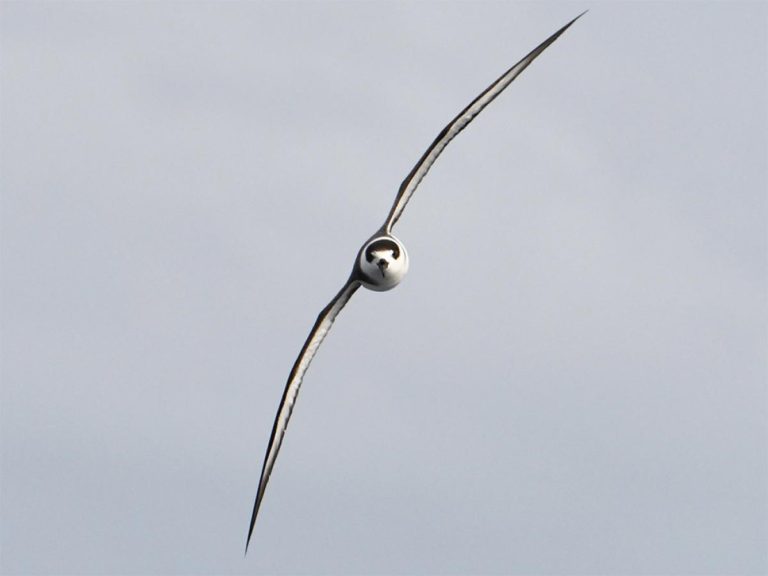
White-necked Petrel. (Kermadec Islands, New Zealand; March 2021.) © Scott Brooks
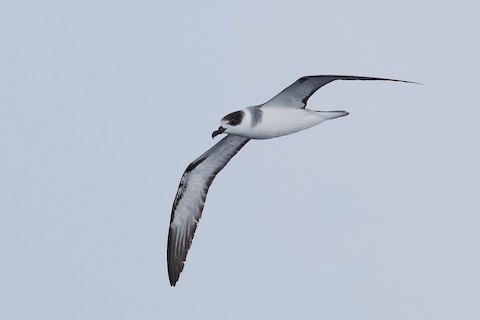
White-necked Petrel. (Brittania Seamount, offshore from Byron Bay, New South Wales, Australia; March 29, 2020.) © Elliott Leach

White-necked Petrel. (Offshore from Wollongong, New South Wales, Australia; March 2008.) © Brook Whylie

White-necked Petrel. (Offshore from South West Rocks, New South Wales, Australia; April 3, 2021.) © Marie Lister
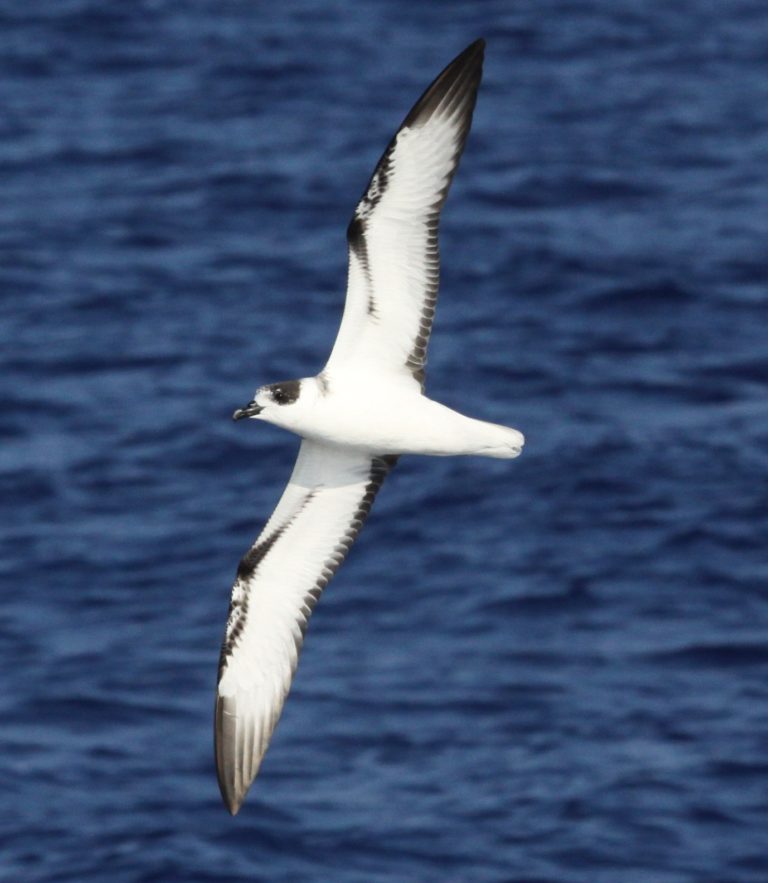
White-necked Petrel. (Offshore from Kailua-Kona, Big Island, Hawaii; December 16, 2009.) © Daniel L. Webster / Cascadia Research Collective

White-necked Petrel. (Offshore from Tutukaka, North Island, New Zealand; February 20, 2021.) © Scott Brooks

White-necked Petrel. (Offshore from Kaikoura, South Island, New Zealand; January 5, 2018.) © Encounter Kaikoura

White-necked Petrel in heavily worn plumage. (Offshore from Muko-jima, Ogasawara Islands, Japan; September 7, 2014.) © Hiroyuki Tanoi
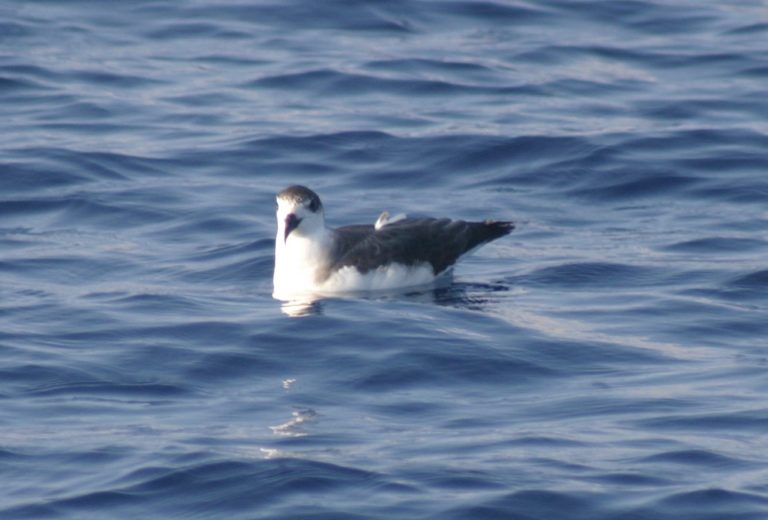
White-necked Petrel. (Offshore from Kailua-Kona, Big Island, Hawaii; November 25, 2004.) © Robin Baird / Cascadia Research Collective
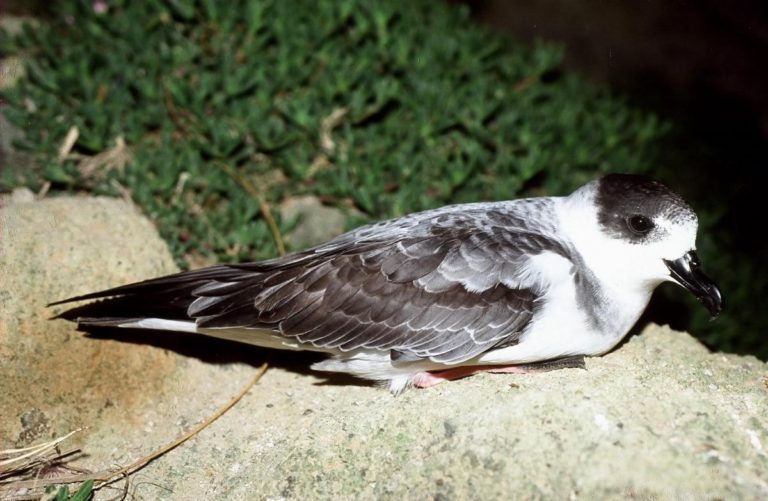
White-necked Petrel. (Macauley Island, Kermadec Islands, New Zealand; November 1988.) © Graeme Taylor
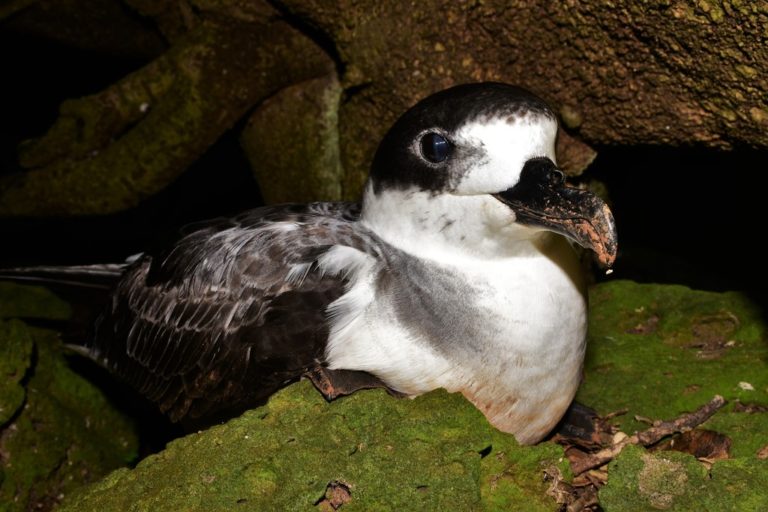
White-necked Petrel. (Phillip Island, Norfolk Island, Australia; March 27, 2019.) © Daniel Terrington
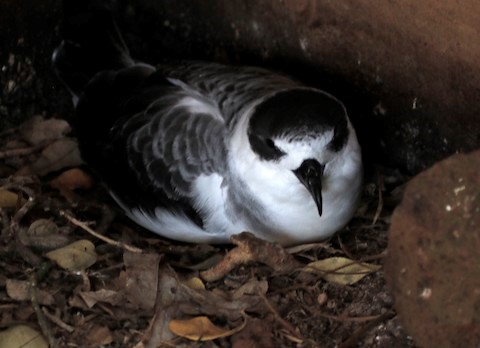
White-necked Petrel. (Phillip Island, Norfolk Island, Australia; November 20, 2018.) © Ian Davies

White-necked Petrel. (Phillip Island, Norfolk Island, Australia; January 18, 2021.) © Luke Halpin
Cf. Vanuatu Petrel. White-necked and Vanuatu Petrels were formerly presumed to be conspecific, and their status is not completely resolved, but they are increasingly classified as separate species. They are essentially indistinguishable under field conditions, and Vanuatu is poorly known, thus far identifiable solely based on geographical probability around its recently discovered breeding grounds.
Vanuatu is slightly smaller, averaging 5-10% shorter than White-necked in total length and wingspan. On average, Vanuatu has darker underwings, with somewhat more extensive black in the wingtips and underwing coverts—usually forming a nearly solid black bar along the leading edge of the primaries and continuing most of the distance inward from the wrist to the body—whereas White-necked usually shows a patchy, broken black bar in the same location. However, it is not clear that any of these plumage features is ever diagnostic, as both species have been found to vary.
Cf. Juan Fernández Petrel. White-necked, Vanuatu, and Juan Fernández Petrels were formerly regarded as conspecific. They are very similar and overlap widely across the central and southern Pacific—both White-necked and Juan Fernández are fairly common nonbreeding visitors to Hawaiian waters. White-necked and Vanuatu are essentially indistinguishable (see above), but they can be distinguished from Juan Fernández.
White-necked and Vanuatu can usually be identified by their well-defined white collar which separates the black cap from the gray back. Juan Fernández usually shows shades of gray: dark-gray on the crown and medium or pale gray on the back, with a gray collar in between, usually blended and lacking any sharp contrast on the nape. Under some conditions, Juan Fernández can show also a white (or very pale gray) collar, but rarely if ever shows the crisp contrast of White-necked and Vanuatu.
Juan Fernández is usually best identified by its underwing pattern: white with narrow black wingtips and trailing edges, a small black “comma” on the inner side of the wrist, and subtle blackish spotting on the outer primary coverts. White-necked and Vanuatu have more extensive black wingtips and carpal bars.
Notes
Monotypic species. Formerly regarded as conspecific with Vanuatu Petrel (P. occulta) and Juan Fernández Petrel (P. externa), known collectively as the White-necked Petrel (P. externa).
IUCN Red List Status: Vulnerable.
References
BirdLife International. 2018. Pterodroma cervicalis. The IUCN Red List of Threatened Species 2018: e.T22697957A132614556. https://dx.doi.org/10.2305/IUCN.UK.2018-2.RLTS.T22697957A132614556.en. (Accessed May 1, 2021.)
Brooke, M. 2004. Albatrosses and Petrels across the World. Oxford University Press.
eBird. 2021. eBird: An online database of bird distribution and abundance. Cornell Lab of Ornithology, Ithaca, N.Y. http://www.ebird.org. (Accessed May 1, 2021.)
Harrison, P. 1983. Seabirds: An Identification Guide. Houghton Mifflin, Boston.
Howell, S.N.G. 2012. Petrels, Albatrosses & Storm-Petrels of North America. Princeton University Press.
Howell, S.N.G., and K. Zufelt. 2019. Oceanic Birds of the World. Princeton University Press.
Onley, D., and P. Scofield. 2007. Albatrosses, Petrels & Shearwaters of the World. Princeton University Press.
Pratt, H.D., P.L. Bruner, and D.G. Berrett. 1987. A Field Guide to the Birds of Hawaii and the Tropical Pacific. Princeton University Press.
Pyle, R.L., and P. Pyle. 2017. The Birds of the Hawaiian Islands: Occurrence, History, Distribution, and Status. Version 2 (January 1, 2017). http://hbs.bishopmuseum.org/birds/rlp-monograph/. B.P. Bishop Museum, Honolulu, Hawaii.
Tennyson, A.J.D. 2015. White-naped petrel. In New Zealand Birds Online (Miskelly, C.M., ed.). http://nzbirdsonline.org.nz/species/white-naped-petrel. (Accessed May 1, 2021.)
Seabirding of Japan. 2021. White-necked Petrel. http://seabirding-japan.com/white-necked-petrel. (Accessed May 1, 2021.)
Xeno-Canto. 2021. White-necked Petrel – Pterodroma cervicalis. https://www.xeno-canto.org/species/Pterodroma-cervicalis. (Accessed May 1, 2021.)
